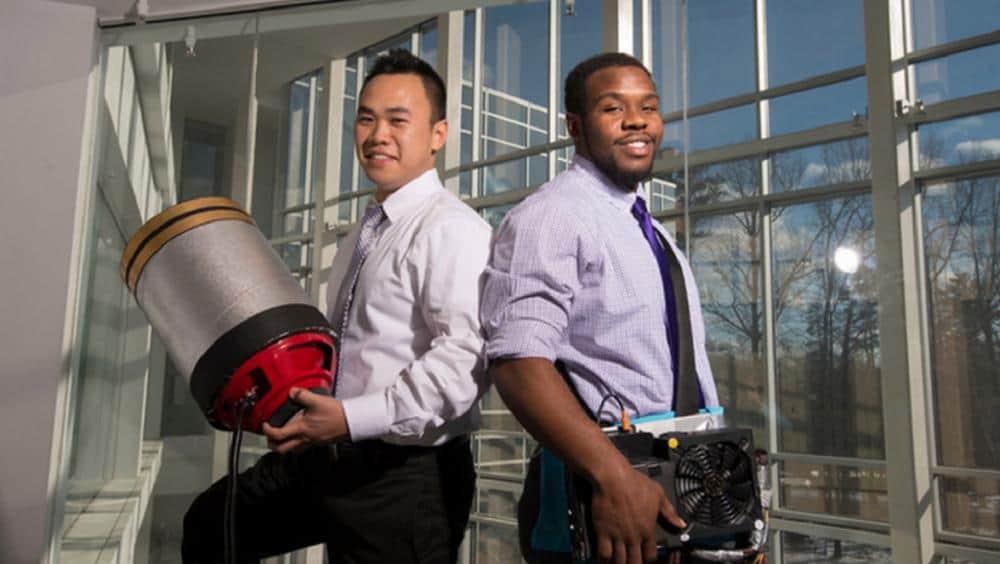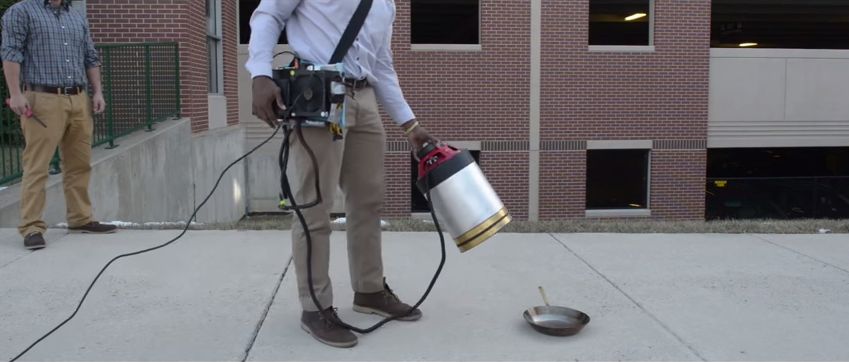Fire is a beautiful, terrifying, and captivating beast. Licking the essence of what it desires before it consumes it whole, it’s a force of nature to be reckoned with – and also handled with caution for obvious reasons.
Every year out-of-control fires consume approximately 1,240,000 homes and cause 3,240 civilian deaths – and just in the US. But thanks to two innovative students from George Mason University, firefighters may soon have a better weapon to use when extinguishing out-of-control fires than water and toxic fire retardants.

Engineering students Seth Robertson and Viet Tran have discovered it’s possible to extinguish fires with mini sound cannons. The device they created works to extinguish fires with low frequency sound waves by separating the oxygen from the fire’s fuel. If the sound waves are distributed consistently enough through the fire, it will extinguish its flames by creating a barrier between the fuel and oxygen.
“The pressure wave is going back and forth, and that agitates where the air is. That specific space is enough to keep the fire from reigniting,” stated Trans when explaining the project.

The Electrical and Computer Engineering majors applied for a provisional patent for the device last November. As shared in the The Washington Post, “It started as an idea for a senior research project, and after a year or trail and error and spending about $600 of their own money, they have built a somewhat portable sound generator, amplifier, power source and focusing tube that would seem to have great potential in attacking fires in a variety of situations.”
Could this device finally be the technology that has the power to put out massive forest fires and other disastrous infernos? While other aspects of the invention still need to be worked out, such as how to cool fires so they don’t’ re-ignite, it seems like a solid innovation well on its way to becoming a useful invention.

Their adviser Mark said his “Initial impression was that it wouldn’t work… Some students take the safe path, but Viet and Seth took the higher-risk option.”
“We still want to do a lot more testing,” said Train, “to see if we need to change the frequency [to extinguish] other [fires].”


